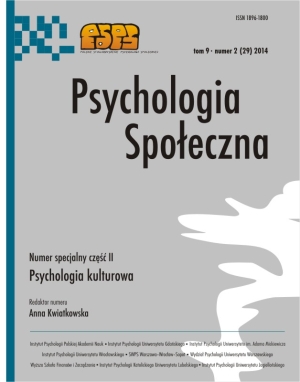Bufor wielokulturowy
Multicultural buffer
Author(s): Paweł Boski, Monika Biłas-HenneSubject(s): Psychology
Published by: Wydawnictwo Naukowe Scholar Sp. z o.o.
Keywords: multicultural buffer; acculturation; adaptation; international students
Summary/Abstract: The study explores adaptation processes of European students participating in the Erasmus Lifelong Programme. Multicultural buffer (MB) is a central theoretical concept introduced in our paper. It is conceived as a group/community of sojourners from various countries and nationalities which shields them from external reality of the host culture and facilitates coping through mechanisms of internal support. The study was conducted in 31 European countries with the sample of N = 1891 students. Operation of the multicultural buffer was strongly evidenced all country samples and all domains of adaptation: The quantity and quality of interpersonal relations within multicultural buffer highly exceeded those with tje local culture members. A path model explained sojourn satisfaction through the impact of contact frequency, social support and emotional balance within local, international and co-national groups. Those three social contexts are not antagonistic to each as much as contacts within each of those groups is accompanied with social support which they offered. Sojourn satisfaction is explained mostly by higher frequency of contacts with members of the host culture, by local culture competences (socio-cultural adaptation), and by positive emotions experienced in interactions with members of the local culture (psychological adjustment). Entering contacts with the locals results from cultural motivation to study abroad and also from having a job in the country of sojourn. Finally, local language competences of reduce contacts with home nationals. Thus, even though dominated by multicultural buffer, the interactions with the local culture’s environment is an essential factor for sojourner psycho-cultural adaptation.
Journal: Psychologia Społeczna
- Issue Year: IX/2014
- Issue No: 29
- Page Range: 179-199
- Page Count: 21

